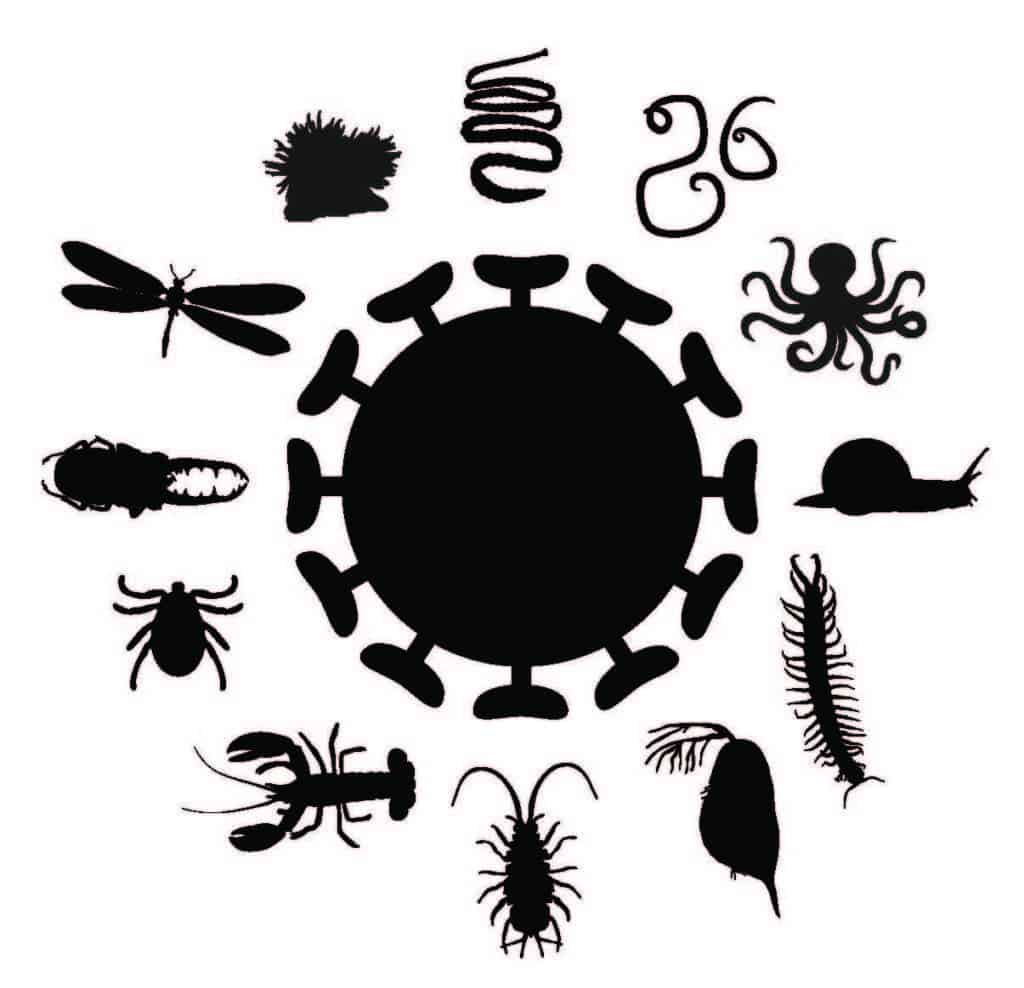A pioneering study of invertebrates has revealed what many biologists already suspected: when it comes to viruses, we’ve only seen the tip of the iceberg.

Invertebrates are the most populous animals. They lack a backbone, but the term is otherwise quite unclear, especially in modern biological contexts. “Invertebrata” is a term of convenience, not a taxon and has very little circumscriptional significance in most cases. Still, the majority of animal species are invertebrates with one estimate putting the figure at 97%. As such you’d expect them to have a tremendous viral fauna as well.
Invertebrates are often understudied when it comes to bacteria and viruses, especially compared to humans and other mammals. We’re less worried about snail viruses affecting us so there’s less incentive to study that. With this idea in mind, Professor Edward Holmes, from the Marie Bashir Institute for Infectious Diseases & Biosecurity and the School of Life and Environmental Sciences set out to see just what kind of viruses live on invertebrates.
They expected something new, but the results were surprising even for them.
“This groundbreaking study re-writes the virology text book by showing that invertebrates carry an extraordinary number of viruses — far more than we ever thought,” Professor Holmes said.
“It’s remarkable that invertebrates like insects carry so very many viruses — no one had thought to look before because most of them had not been associated with human-borne illnesses.”
Much of the interest around this study was focused on insects. Although insects such as mosquitoes are notoriously known for transmitting dangerous diseases such as malaria, most insect viruses are harmless to humans – they’re not even transmissible. Importantly, studies like this could help us better understand where some of the insect-borne diseases originate, such as the controversial ‘Lyme-like disease’ that is claimed to occur following tick bites.
Judging by the genetic evidence, it also seems likely that some of the viruses have been living with their hosts for much longer than previously thought (though the “billions of years” proposed by the University of Sydney announcement is a bit of a stretch, considering that even multicellular organisms hadn’t evolved “billions of years” ago). Still, it’s quite possible that many of the viruses that affect us today are derived from viruses found today in invertebrates.
“We have discovered that most groups of viruses that infect vertebrates — including humans, such as those that cause well-known diseases like influenza — are in fact derived from those present in invertebrates,” said Professor Holmes, who is also based at the University’s multidisciplinary Charles Perkins Centre.
All in all, it seems like there’s a world of viruses we know very little about and which we’re just starting to explore. It may be a perfect time to do that too, because a part of it is already exploring us. There’s a definite need for more research in this area.
Journal Reference: Mang Shi, Xian-Dan Lin, Jun-Hua Tian, Liang-Jun Chen, Xiao Chen, Ci-Xiu Li, Xin-Cheng Qin, Jun Li, Jian-Ping Cao, John-Sebastian Eden, Jan Buchmann, Wen Wang, Jianguo Xu, Edward C. Holmes, Yong-Zhen Zhang. Redefining the invertebrate RNA virosphere. Nature, 2016; DOI: 10.1038/nature20167


